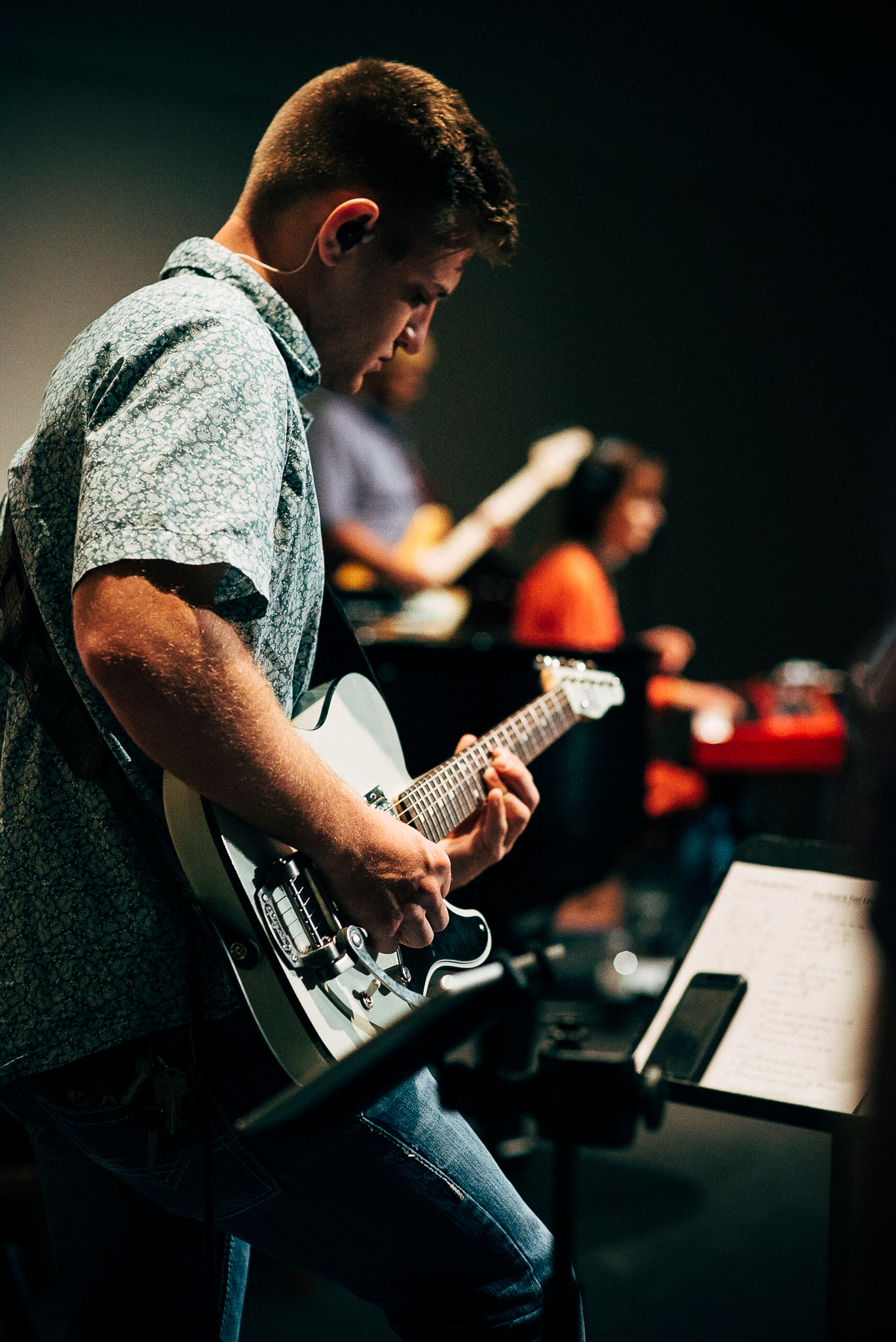As electric guitar players in the local church, you are called on to do a lot every Sunday morning. You usually have the most equipment that you have to tow back and forth, requiring quite a bit of energy, but hauling 50 pounds of gear isn’t the only thing that you are asked to do; You are also asked to cover many different sonic spaces for most of the songs that you lead with your team, which are almost always recorded with a minimum of 2 guitars!
However big the challenge, playing electric guitar is one of the greatest opportunities to convey the spirit of a song and invoke emotion during worship through song, with the ultimate goal of pointing our people towards Jesus Christ. I hope that this is a challenge that you want to embrace, and believe that this can be conquered successfully if we approach playing with 4 things in mind:
1. Nailing Our Lead Lines
As you prepare for Sunday sets as an electric guitar player, it is incredibly important to take careful note of where distinct hooks and licks are, what they are, and learn them. It may feel creatively restrictive to play the parts directly by the book, but think about all the time you would need to fill with something original if you didn’t play these parts. It would be an incredibly time-consuming task, and considerably difficult for you and your band! Lead lines are also helpful markers for others in your band to feel where the song is going. Let’s focus on being creative in other aspects of our playing and nail our lead lines!
2. Filling Space In Less Defined Moments
What do we play in the moments that don’t have obvious hooks or rhythm parts? I would argue that these moments present the greatest opportunity for you to create as a guitar player. While some songs have rhythm guitar parts that are distinct and can easily be emulated, there are a lot of songs that aren’t so clear cut. In order to do this well, we need to be able to work in hybrid roles as lead and rhythm players as well as being able to create ambient pads that add texture to our band’s sound. This aspect of electric guitar in our worship context will draw on your knowledge of the guitar and music theory more than any other!
3. Having Tone that Fits Clearly in a Mix
Let’s say that you have mastered your lead lines and feel comfortable with what you are playing in verses and other less defined moments. We now need to make sure that the parts that you are playing actually fit within the context of the full band’s sonic output! This is one of the best goals to run towards side-by-side with your audio engineer. There are many questions to ask here: is my overdrive so heavy that it’s starting to clash with the bass guitar? When I boost, does that mess up my audio engineer’s mix balance? Is my reverb mix so high that all my clarity is gone? Are my parts getting in the way of our vocalists and keys player? These are all important questions to answer in order to be unified in our approach as bands.
4. Build Flexible Rigs That Achieve YOUR Sound
It’s incredibly tempting to quickly purchase the new piece of gear that your favorite worship guitar player just added to their rig in hopes that it will make you sound like they do. If you feel that this is your reasoning for buying new gear, I want you to remember this: we would rather have you serving as people who are actively involved in and committed to our church body than the big names of worship guitar playing! As you continue forming your gear around your tastes, use these great players as models and suggestions for you to create your own sound, rather than perfection. We would rather you have gear that allows you to satisfy the 3 points above than giving you the exact same tone and settings that were used on a record!
Applying these principles will allow you to express yourself creatively as a guitar player while also serving your band as a cohesive member, making meaningful contributions that add to the final product!

